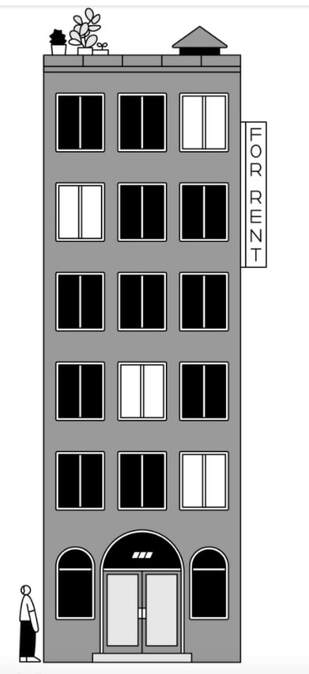|
With mortgage rates at record lows, the refinance boom continues despite the challenges of the COVID-19 pandemic. Last month, refis represented the majority of closed loans. But how likely are homeowners in your state to be approved for a refi loan?
The answer: Pretty darn likely in most states. In a new study, LendingTree sifted through data from more than 15 million mortgage applications using the latest Home Mortgage Disclosure Act numbers. The study found that nationally, about 86% of refi applications were approved – and some states had approval rates above 90%. “Your readers might be concerned about their chances of getting a refi approval, but according to our analysis, most applications are successful,” LendingTree’s Stacia Werksma told MPA. Report author Tendayi Kapfidze, vice president and chief economist at LendingTree, stressed the importance of letting borrowers know the advantages of refinancing. “Borrowers don’t always take advantage of refinancing despite the obvious financial benefits,” Kapfidze said in the report. “For example, a borrower who took out a $300,000 loan five years ago in September 2015 at 3.91% could save about $300 per month on their payment and more than $15,000 in lifetime interest by refinancing at 2.87% now.” The study broke down which states had the highest and lowest refi approval rates, based on two key factors: credit score and home-price appreciation. “Generally, borrowers with a decent amount of equity in their home and a solid credit score can expect a higher chance of approval,” Kapfidze said. Kapfidze said that 80% or more of refi loans are approved in 48 out of the 50 states – and in no state does the approval rate fall below 78%. “This is good news for potential refinancers, as it means their odds of approval are strong no matter what part of the country they live in,” he said. South Dakota, Utah, North Dakota and Nebraska all have approval rates above 90%, LendingTree found. Florida and New York have the lowest refinance approval rates – but approval rates in both states are above 78%. Unsurprisingly, states with better average home-price appreciation and credit scores tended to have higher refi approval rates, Kapfidze said. “Ten-year home-price appreciation and a borrower’s credit score correlate positively to the refinance approval rate,” he said. “While there are exceptions and other factors to consider, this means that homeowners who have higher credit scores and whose homes have increased in value are more likely to be approved for a mortgage refinance.” States with the highest refi approval rates
States with the lowest refi approval rates
0 Comments
In new lawsuit, more than 85,000 landlords challenge legitimacy of CDC eviction moratorium9/29/2020 When the Centres for Disease Control announced on September 1 that a nationwide eviction moratorium would keep renters in their homes until December 31, its legitimacy was immediately called into question, with some wondering when the first lawsuits challenging the order would be filed.
One such lawsuit, filed by the New Civil Liberties Alliance in Georgia’s Northern District on behalf of a collection of plaintiffs including the 85,000-member National Apartment Association, is already underway. According to NCLA litigation counsel Caleb Kruckenberg, the organization’s case against the CDC, that it is overstepping its boundaries as a federal agency and infringing on states’ rights, is particularly strong. In light of the moratorium, Kruckenberg describes the CDC as an “agency that’s saying basically, ‘We have the unlimited power to void state law across the country under the premise that it’s somehow a reasonable action to take to mitigate disease.’ Just to say it out loud is to recognize how outrageous it is.” Readers may be asking why the CDC is involving itself in housing legislation at all. It’s a fair question. The 1944 Public Health Service Act granted the CDC the power to take actions it feels are necessary to stop the spread of infectious diseases across state lines. (The moratorium tries, without evidence, to make a case that evictions will lead to a spike in COVID-19 cases by forcing tenants to move into crowded homeless shelters.) But the World War Two-era law refers to impounding livestock and making decisions on imports. There is no mention of the CDC having authority over housing policy. “The CDC is taking this statute and they’re saying, ‘So long as we can articulate a reason that something we do addresses disease, then we’re allowed to do it,’” Kruckenberg argues, calling the CDC interpretation of the Public Health Service Act “an outrageous abuse of agency authority.” The conversation around the moratorium would be different, Kruckenberg says, if it had been passed in Congress and received presidential approval. But the current version, a blanket order that overrules the eviction laws in all 50 states, is a subversion of the entire democratic process.” The moratorium also gets into questionable legal territory by preventing landlords from taking their individual eviction cases to court, which could be interpreted as a violation of their constitutionally guaranteed right to access courts as a means of rectifying legal grievances. “The only way you can evict somebody legally and get them out of your house is through the courts,” Kruckenberg says. “The only way to do this has now been shut down, and it has been shut down by an administrative agency.” Impact on landlords Kruckenberg is sympathetic to the concerns of renters, but the discussion around evictions often leaves landlords’ struggles out of the equation. “Nobody wants anyone to be evicted, but all my clients, they’re in a situation where they have houses that they’re renting to people and every one of them has had a tenant that has refused to pay any rent at all, for months on end,” he says, adding that many of his clients’ tenants’ refusal to pay rent pre-dates COVID-19 by several months. One of the plaintiffs in the case is Columbia, South Carolina-based investor David Krausz, who signed on after a long-term problem tenant failed to abide by the terms of a consent agreement which stated that if she failed to pay a certain amount of back rent by a certain time she would be in line for removal from Krausz’s property. Two days before eviction was to take place, the tenant was told about the CDC moratorium by her attorney. She filled out the requisite form and handed it to the court (a copy wasn’t provided to Krausz), who told Krausz the matter would remain unresolved until January 2021. “You can imagine how awful that was,” he says. Krausz is one of many American landlords who self-manage a modest portfolio of low-margin properties. On a typical $700 condo property, for instance, he says his monthly condo fees are about $300 a month, with an additional $100 a month or more going toward taxes and maintenance. “I might make a couple hundred dollars on the property a month – if nothing happens – and that’s with me doing all the work,” he says. “When somebody doesn’t pay rent, it’s not that I’m just not making money, I’m losing money.” By ending the CDC order, Kruckenberg aims to both staunch the bleeding and help landlords regain their rights as property owners. “There’s a reason they created eviction as a remedy,” he says. “At some point, a landlord cannot just keep housing this person who’s not paying rent, especially when the landlord has to pay. That’s why there’s eviction under all 50 states’ laws.” For the NCLA and its clients, the ideal outcome of the case would be an order deeming the CDC eviction moratorium invalid. Until then, Kruckenberg hopes the court will issue a temporary order that prevents the CDC ban from going into effect while litigation proceeds. “We’re legitimately concerned that if the CDC thinks they can do this for eviction law, what else could they do?” he says. “They’re making this decision for the entire country, for every state, and they don’t have the authority to do that.” As the share of loans in forbearance continues its slow but steady decline week after week, it appears that fears of a post-forbearance flood of defaults may have been little more than a product of the general panic that followed the onset of the COVID-19 pandemic.
“It hasn’t quite reached the heights that were initially anticipated,” says Matt Tully, vice president of agency affairs at Sagent Lending Technologies. “That number appears to at least have peaked for the moment.” Tully has been tracking how borrowers have been exiting their forbearance plans and recently wrote about his findings on Sagent’s blog. He found that Americans are leaving forbearance in three primary ways, one of them somewhat baffling. First, the two most expected exits. From June 22 until August 23, between 10 and 43 percent of borrowers ended forbearance by agreeing to settle their unpaid mortgage balances at the end of their loans, when, for Agency borrowers at least, the forborne amounts become a non-interest bearing lien that gets paid off when the mortgage is refinanced or the home is sold. This is the simple outcome most consumers and lenders will have had in mind when forbearance first entered public consciousness. The fact that so many Americans are keeping up their end of the bargain speaks to the program’s success. “It’s working the way it’s supposed to be working,” Tully says. “From a public policy perspective, that’s what you want.” The second most frequent forbearance exit involves borrowers who were able to erase their unpaid balances with a lump-sum payment. If readers are wondering if the ability to pay all at once is a sign that these borrowers may not have needed forbearance in the first place, they’re not alone. Tully thought the same thing. “You hear all these things about the savings rate in the United States and how low it is and how the average number of savings is $400. If it really is the case that people can come current with a lump sum, that would imply they’ve got money in the bank,” he says. While data behind why these lump-sum payments were able to be made doesn’t exist, Tully’s estimation is that homeowners using forbearance simply set aside the money they would have spent on their mortgages and used it to pay their way out, possibly because their employment or financial situations solidified sooner than they had expected. From June 22 until August 23, between 16.5 percent and 24 percent of homeowners exited forbearance using lump-sum payments. The most frequent way Americans ended their forbearance plans is a head-scratcher: Despite agreeing to forbearance, they kept making their mortgage payments. From June 22 until August 23, between 16 percent and 49 percent of homeowners left forbearance in this manner. Such a phenomenon begs the question: How can you stay current on your payments while also deferring them? Tully has a few theories. First, borrowers may have felt compelled to agree to a forbearance plan because of the prevailing uncertainty caused by COVID-19 and the unknown scale of the inevitable recession. Not knowing if they would be employed a week, a month, or three months later, many homeowners may have signed up for forbearance as a low-risk just-in-case. Other explanations are simple enough. Some borrowers may have accidentally or mistakenly requested forbearance. Others may have requested it and forgotten to turn off their automatic mortgage payments. April was a confusing time. Tully has also had his eye on the number of homeowners who have been re-entering or extending forbearance. Re-entries comprise a miniscule, percentage of forbearance activity, but extensions saw a sharp rise in late June and early July – the time when most initial, 90-day forbearance periods expired. It’s not that borrowers are necessarily distressed and need another 90 days to get back on their feet, Tully says, it’s more the result of lenders offering 90-day forbearance rather than the full, CARES Act mandated 180 days as a way of avoiding the colossal servicing burden that would result if all of their clients were to exit forbearance at the same time in October. “Perhaps people really need it, or that’s what they feel they’re entitled to,” he says. “We’ll see in the coming weeks if people go from the 180 to the full 360 they’re entitled to under the CARES Act.” As Sagent’s man in D.C., Tully has had a front-row seat for the gridlock that has seized Congress and is preventing the federal government from releasing another batch of COVID-19 assistance. Aside from the usual questions around the size and scope of the next aid package, he’s asking another: When will the COVID-19 emergency be declared over? “The end of March 2021 will be one year since the CARES Act passed,” he says. “You could theoretically see a scenario where if someone doesn’t plant a flag and say, ‘This is the end of the COVID crisis and we’re returning back to normal,’ people could still be requesting forbearance. This is kind of on auto-pilot until someone definitively declares the crisis is over.” The Department of Housing and Urban Development’s final rule changing its implementation of the Fair Housing Act’s disparate impact standard took effect Thursday, and the agency immediately faced calls to scrap the rule change.
HUD first proposed the new rule, which would amend its interpretation of the standard, last August. The change replaces the prior three-step threshold for proving fair housing violations with a five-step process that would require regulators to prove intentional discrimination. Critics of the rule change say that HUD has made the standard basically worthless by setting too high a bar to prove discrimination. “Practically speaking, the new HUD rule would sideline disparate impact as a usable legal tool to tackle systemic housing discrimination,” the National Housing Law Project said in a statement. “That means landlords, lenders, and other housing providers would be free to engage in activities that deprive people of color, domestic violence survivors, families with children, people with disabilities and others of housing opportunities – so long as a discriminatory intent could not be shown.” “It is difficult to believe that our nation’s federal housing agency is promoting housing discrimination in the middle of a pandemic and related housing crisis,” said Shamus Roller, the project’s executive director. “While the rest of the country is demanding racial justice, the administration attempts to eliminate one of the nation’s most important civil rights tools and writes the playbook on how to discriminate without getting caught.” “HUD’s final rule on disparate impact is the latest abhorrent action by the Trump administration to gut civil rights and fair housing protections,” said Diane Yentel, president and CEO of the National Low Income Housing Coalition. “…The Fair Housing Act prohibits housing policies and practices that have a discriminatory effect, even if there was no obvious intent to discriminate. Policies and practices that have the effect of creating disparate impact can be just as harmful to society as outright intentional discrimination.” The rule change has even garnered criticism from one of the top housing industry associations. “While there is debate … as to whether additional clarity is needed with respect to disparate impact claims, there is broad consensus across the country that now is not the time to issue a regulation that could hinder further progress toward addressing ongoing systemic racism,” Vince Malta, president of the National Association of Realtors, said in July. “…Ultimately, NAR supports disparate impact as a legal theory to address the unfair housing practices that inhibit fair housing and unfairly target members of protected classes, while still protecting the ability of realtors and other stakeholders to run their businesses in a free and functional real estate market.” Rep. Maxine Waters (D-Calif.), chairwoman of the House Financial Services Committee, called for the rule change to be rescinded “immediately”. “This move by the Trump Administration to weaken fair housing is turning back the clock on decades of progress and 45 years of jurisprudence,” Waters said Thursday. “The new rule shifts the burden of proof from the perpetrators of discrimination onto the victim, making it significantly more difficult for victims of discrimination to prevail in court and ultimately making it easier for discriminatory policies and practices to plague our housing markets.” The condemnation wasn’t universal, however. Edward J. Pinto, director of the American Enterprise Institute Housing Center, called the new rule “an historic and positive change.” “In the past, many plaintiffs have filed disparate impact suits based on inputs, for example a higher turn down rate for a protected class, and claimed that this demonstrated disparate impact,” Pinto wrote in an AEI report on the rule. “Defending against such a claim was both difficult and expensive, especially for smaller banks. Now, for the first time, HUD has recognized that defendants have a valid interest in outcomes of lending policies and can use these outcomes as a defense. This is a common sense solution to a problem that has befuddled lenders for decades.” If you’re hoping to relocate, renew a lease or renegotiate an existing agreement, this is what to keep in mind.
There’s nothing like being stuck inside for months on end to make you notice your home’s shortcomings, and stew about how much you’re paying for each and every one of them. Especially in places like New York and San Francisco — where rents reached record highs in 2019 — it’s now hard to justify top-dollar leases when you could be doing your job (and overseeing your kids’ remote schooling) anywhere. This, no doubt, explains the boom in suburban home sales since the pandemic began, and the corresponding exodus from expensive cities. You might expect that this Covid-sparked urban flight would also drive down rents, and in some cases you’d be right. But that also depends on where you’re looking, explained Cheryl Young, an economist at Zillow, an online real-estate marketplace. “Rents have cooled significantly, but national average prices are still growing compared to last year,” she said, noting that as of August, national rent growth was 0.7 percent, compared with 3.5 percent in 2019. “So it’s slowing, but it’s only negative in places that typically have large rental populations, like New York, the Bay Area, Boston and Washington, D.C.” So, how should renters seize this moment? “If you’re looking to get a deal, my biggest advice is to learn your market,” said Eric Brown, an agent for Compass, another digital real-estate platform. “Is it an area where landlords are facing a lot of vacancies, or are homes getting snapped up within a few days?” Once you have an idea of demand, he explained, you’ll be in a stronger position to negotiate effectively. Here’s how to get the best rate whether you’re looking to move, renew your lease or wrangle new terms on an existing one. Scout rent prices on real estate websites This is the easiest part: Go online and compare listings in your current neighborhood or the one where you’re hoping to live. “It’s helpful to know what the neighborhood’s median rent is for the size of apartment that you’re looking for, and what percentage it has changed in the previous few months or year,” said Nancy Wu, an economist who analyzes housing data at StreetEasy. “It gives you a broad sense of how the community is doing, and what you’ll be able to ask for.” While you’re at it, look at how long homes have been sitting empty. If many of them have gone unrented for weeks or months, then you’re in luck. “When tons of buildings have apartments available, then it’s a pretty safe bet that landlords are desperate for tenants and willing to negotiate,” Mr. Brown said. And get specific. Some areas, like ones that normally have a dense student population, have been hit harder by the pandemic than others, Ms. Young noted. “Those rents will continue to be down for months, because it’s not like college students are going to come back midsemester,” she explained. Do some digging If you want to renegotiate your lease or get a bargain on a new one, some old-fashioned detective work can take you the extra mile. “Looking up at the windows at night can give you a decent idea of how empty a building is based on how many lights are on,” said Elizabeth Donoghue, a tenants’ rights lawyer in Manhattan. “Keep your ear to the ground. You might hear people say, ‘Oh, that person on the third floor moved out, and 4B is leaving too.’” Ms. Donoghue also recommended asking (tactfully) other people in the building whether they’ve renegotiated recently, or if they know of someone who has. “If another tenant managed to get $200 off, it won’t be posted online anywhere — you’ll only find out through word of mouth,” she said. If you’re in the middle of a lease, your landlord might not be willing to budge. Either way, it’s always worth checking your apartment’s rent history. “The records might show that your apartment has been illegally deregulated, or that you’ve been overcharged,” Ms. Donoghue said. “It helped one of my recent clients discover that his landlord owed him $9,000 .” In New York City, you can request rent records from the Division of Housing and Community Renewal. Other cities have different laws, but familiarizing yourself with your rights as a tenant will always work in your favor. Go for big buildings over small ones Certain types of buildings are more likely to be discounted than others. “Most of the people who have left New York City this year tend to be younger renters — more transient people in their early 20s and 30s who have older family members they can go live with, or jobs where they can work remotely,” Mr. Brown said. “These people are more likely to live in big, no-fee rental buildings that are owned by commercial landlords, and those buildings haven’t been doing well since the pandemic hit.” These buildings are also less desirable from an infection standpoint, Ms. Wu added. “We’re not seeing as much demand for large luxury rentals where you’re sharing elevators with 500 neighbors, and where part of your rent includes amenities like a pool and a gym that’s been closed,” she said. But if you’re looking for a deal, this is where you might find it. The same goes for smaller apartments; if you’ve been looking to ditch your roommates, now is the time to pounce on a studio or a modest one- or two-bedroom. “Apartments with lower square footage have seen significantly more vacancy in New York City and many urban areas today, because the people who live in them tend to be more mobile,” Mr. Brown said. “We haven’t seen as much turnover in apartments with three or four bedrooms, where you have families of four or five with schools and multiple jobs to anchor them.” As for single-family homes? Good luck. “Most of the deals we’re seeing are for multifamily housing,” Ms. Young said. “If you’re trying to rent a single-family home, that’s a much tighter market, which makes sense given that many people are working from home with kids who are doing remote school, and they need more space.” Think about what the landlord is looking for Most large commercial landlords just want someone to pay rent in full, on time. But some mom-and-pop landlords are willing to negotiate if they like you and think you’ll be a reliable tenant. The key is to get personal “My advice is to come in with a package that shows who you are,” Mr. Brown said. “Have your financials ready, and a reference from your prior landlord, but also add a bio about yourself and your family,. You want to make that deeper connection.” It’s also worth making a phone call to ask if the landlord has preferences on move-in dates and ideal lease length. If you demonstrate eagerness to work with his or her needs, it could buy you more wiggle room on rent price. Even if your landlord is a large company, you still want to be polite. “If you call up and threaten, the landlord’s immediate reaction will be to threaten back, and that’s a lose-lose situation,” Mr. Brown said. Be prepared to settle for concessions “Landlords would almost always rather give you a few months free than reduce your actual rent,” Ms. Donoghue said. Offering concessions — like a rent-free period — allows landlords to keep their so-called “face rent” high and stable, which affects what they can charge in the future as well as how much their property is worth if they refinance it. The good news is that many landlords are handing out concessions like candy these days. “In July, 30.4 percent of all rental listings had concessions, which is huge,” Ms. Young said. “In Washington, D.C., it was 57.5 percent of listings.” And 90 percent of the concessions she has seen have involved free rent. “So you may not see rent go down, but you will be able to get a few months off.” The bad news is that if you’re hoping to stay in an apartment for longer than two years, a few months free won’t save you tons of money in the long term. “If you’re planning to be there for four or five years, you’re better off asking for a lower rent,” Mr. Brown said. “I recommend trying to split the difference. You could say; ‘I understand that you don’t want to lower my rent to the number I’ve asked for. Why don’t we lower it a little bit and do one month free?’” If your landlord isn’t budging on any discounts or concessions, consider asking for other breaks. “Now is the time to ask for new appliances, or upgrades in the bathroom,” Ms. Wu said. “Anything to make your home more comfortable is fair game, since you’re probably spending a lot more time in it right now.” Be patient The coronavirus isn’t going away anytime soon, and many markets suffering from the economic fallout will take a long time to recover — and may get worse before they do. “There’s twice the number of rentals on the market in Manhattan this September compared to last year,” Ms. Wu said. “We’re not going to see that number of people moving back to New York all at once. If anything, more leases are expiring every month, more units are coming onto the market, and we’ll have an excess of inventory well into next year.” While you’re waiting, Ms. Young recommended going month-to-month on your current lease, if you can. “That will allow you more time to look for something specific,” she said. Then you can pounce when the price is right. Nearly 11 million households fell behind on their mortgage or rent payments during the first three months of the COVID-19 pandemic, according to a new study by the Mortgage Bankers Association’s Research Institute for Housing America (RIHA). Meanwhile, 30 million people missed at least one student loan payment.
The report contains data from an internet panel survey specially tailored to study the impact of the pandemic on rent, mortgage and student loan payment patterns. It found that the sudden onset of the pandemic led to abrupt job losses and reductions in hours worked. “However, federal government stimulus programs and employees being called back to work both appear to have helped most individuals make their housing payments,” the MBA said. Still, the report found that 5.14 million homeowners (8%) missed or deferred at least one mortgage payment, while 5.88 million renters (11%) reported a missed, delayed or reduced payment. “RIHA’s study shows that households were largely successful in navigating a difficult economic landscape and continued to make their housing payments during the first three months of the outbreak,” said Gary V. Engelhardt, professor of economics at Syracuse University’s Maxwell School of Citizenship and Public Affairs. “In contrast, nearly half of student debt borrowers missed at least one payment. Data from other sources reveal that this trend has continued through August. With the first round of federal stimulus having run its course, and Congress deadlocked in passing another round of relief, families’ continued ability to meet their housing obligations during the ongoing pandemic is critical to the health of the housing and mortgage industries.” Engelhardt warned that there were still hurdles ahead as the pandemic continues. “The stubbornly high rates of new COVID-19 cases and the labor market’s sluggish recovery both present significant challenges for household finances as the country enters the fall,” he said. Reduced supply of offerings across all loan types led the overall decline in mortgage credit availability in August down to a six-year low.
The Mortgage Bankers Association's index was down 4.7% to a reading of 120.9, indicating a tightening in lending standards. The drop was driven by a "reduction in supply from both conventional and government segments of the market," according to Joel Kan, associate vice president of economic and industry forecasting at MBA. "Credit continues to tighten because of uncertainty still looming around the health of the job market, even as other data on loan applications and home sales show a sharp rebound," he said. "A further reduction in loan programs with low credit scores, high LTVs, and reduced documentation requirements also continued to drive the overall decline in credit availability." The conventional component of the Mortgage Credit Availability Index (MCAI) fell 8.7% in August, while the government MCAI dipped by 1.4%. Additionally, both conforming and jumbo sub-indexes of the conventional MCAI edged down by 8.6% and 8.9%, respectively. The conforming index was the lowest reading since MBA's series began in 2011. "Jumbo credit availability has fallen around 59% since the pre-pandemic months, and data from MBA's Weekly Applications Survey showed that jumbo mortgage rates stayed over 30 basis points higher than conforming rates in August, which is another indication of the reduced investor appetite for those loans," Kan said. Minority homeowners can face significant barriers to realizing the full benefits of homeownership – especially when it comes to building intergenerational wealth, according to a recent report by the Urban Institute.
According to the report, since homeownership became viable for Black families, “the benefits have been uneven and have not accrued equitably.” Black households with housing equity have about half the equity of white households on average, while Hispanic households have about 63% of the equity of white households on average. “These differences in housing equity reflect differences in underlying home values and the total amount of mortgage debt,” the study said. “All else equal, lower home values for homeowners of color relative to the values of homes owned by white homeowners contribute to lower housing equity for Black and Hispanic homeowners.” Miki Adams, executive vice president at CBC Mortgage Agency – a nationally chartered housing finance agency – said more needs to be done to address that disparity. “I would attribute (the disparity) to historical government policy – the legacy of redlining, which has held values back in areas where minorities tended to concentrate.,” she told MPA. “I think that we have a way to go. The challenge is starting to make homeownership for minorities more equitable and more on par with the white population. There’s a lot that needs to happen, and a lot of that needs to come from government policy.” In order to address the disparity, the Urban Institute made four policy recommendations: reform zoning laws that enforce racial segregation, expand down-payment assistance (DPA) programs, strengthen pre- and post-purchase counseling, and develop financial products for home maintenance and repair. Two of those recommendations – expanding DPA and strengthening pre- and post-purchase counseling – are especially important, Adams said. “When we talk about down-payment assistance and strengthening pre-purchase and post-purchase counseling, those are huge,” she said. “The biggest challenge for minority homeownership is coming up with the down payment and understanding what goes into owning a home. … Quality counseling early on in the mortgage process is very important, and providing continued support after the mortgage closes is critical.” While pre-purchase counseling is a requirement for many loans, post-purchase counseling is comparatively rare, Adams said. “But when you marry pre-purchase and post-purchase counseling, you give the buyer a very strong support system,” she said. CBC Mortgage Agency recently expanded its own post-purchase counseling program from one year to 18 months – and it’s already reaping benefits for borrowers, Adams said. “Our rate of engagement is incredibly high, which tells us that borrowers like and want to be supported after the first year of homeownership,” she said. “Expanding out post-purchase counseling allows us to help borrowers through the difficult times. It’s coaching and mentoring so that borrowers can start to build intergenerational wealth for themselves and their families. The best way they can do that is by becoming successful homeowners.” Robust DPA programs are also important in closing the gap in the benefits of homeownership, Adams said. “In 2019, 54% of our down-payment assistance recipients were minorities, who if not for down-payment assistance would not have had the opportunity to become homeowners,” she said. “Many minority borrowers don’t have the same opportunity to get down-payment assistance from their families as white borrowers do.” In fact, Adams said that 34.8% of CBC Mortgage Agency’s borrowers in 2019 were the first generation in their families to own a home. In addition to expanding its post-purchase counseling, CBC Mortgage Agency also recently expanded its own DPA program, Adams said. “Before, our down-payment assistance was limited to 3½% of the purchase price,” she said. “We just expanded it up to 5%. This will allow borrowers to hang on to a little more of their savings as a cushion for emergencies that may come up after closing.” CBC Mortgage Agency’s mission, Adams said, is to help borrowers become successful homeowners – which can benefit not only those borrowers, but succeeding generations. “We are very focused on how we can increase the numbers of minority homeownership through education and counseling. We think that’s a very important step to bridge that gap,” she said. “The whole point of trying to change the paradigm here is to increase intergenerational wealth over time – and that requires successful homeownership.” Covid-19 mortgage bailouts decline slightly, but a new foreclosure crisis could be brewing9/15/2020 After a substantial decline last week, the number of borrowers in coronavirus-related mortgage bailout programs dropped by a lot less this week.
It’s a signal that homeowners still need a lot more help in order to recover from the ongoing economic ills of the pandemic. There are also indications that a new foreclosure crisis could be on the horizon. As of this week, 3.7 million borrowers are still in government and private sector mortgage forbearance programs. That’s about 7% of all active mortgages, according to Black Knight, a mortgage technology and data firm. These plans allow borrowers to delay monthly payments for at least three months and, in some cases, up to a year. More than 2 million forbearance plans are set to expire this month, and so far about 350,000 borrowers have started making their monthly payments again. On the other hand, about three-quarters of those still in bailout plans, delaying their payments and sinking deeper into debt, are now in renewals. They have extended their plans by another three months. These borrowers are likely unemployed or receiving reduced income due to the pandemic. About 48,000 borrowers started their first forbearance plans this month, which is the lowest level since the bailouts began. So while some of the numbers are improving, the forecasts for foreclosures are deteriorating. The number of seriously delinquent mortgages, those that are at least 90 days past due, more than doubled from May to June. The figure hit its highest level in more than five years, according to CoreLogic. Barring further government support, experts there predict serious delinquencies could double again by early 2022, which could seriously hurt home prices and home equity. “Forbearance has been an important tool to help many homeowners through financial stress due to the pandemic,” said Frank Martell, president and CEO of CoreLogic. “While federal and state governments work toward additional economic support, we expect serious delinquencies will continue to rise — particularly among lower-income households, small business owners and employees within sectors like tourism that have been hard hit by the pandemic.” During the last foreclosure crisis a decade ago, close to 10 million Americans lost their homes, either through foreclosure or bank-approved short sales. The housing market is still recovering from that. This time around, the numbers are likely to be much smaller, as the overall market is much healthier. Borrowers have significantly more equity in their homes, unlike a decade ago, when home prices plummeted and millions were left underwater on their home loans, owing more than the homes were worth. The serious mortgage delinquency rate in June was triple what it was in March and is expected to move much higher, but not all of those borrowers are destined to lose their homes in foreclosure. “While some would go into foreclosure proceedings, many would sell rather than lose all the home equity that they had gained through appreciation over the last several years,” said Frank Nothaft, chief economist at CoreLogic. Foreclosure filings are currently still historically low, but they did jump 11% from July to August according to Attom Data Solutions, as various state and federal moratoria on foreclosures lifted. |
|
- iMove Chicago
- Real Estate School
-
Laws
-
CRLTO
>
- 5-12-010 Title, Purpose And Scope.
- 5-12-020 Exclusions.
- 5-12-030 Definitions.
- 5-12-040 Tenant Responsibilities.
- 5-12-050 Landlord’s Right Of Access.
- 5-12-060 Remedies For Improper Denial Of Access.
- 5-12-070 Landlord’s Responsibility To Maintain.
- 5-12-080 Security Deposits.
- 5-12-081 Interest Rate On Security Deposits.
- 5-12-082 Interest Rate Notification.
- 5-12-090 Identification Of Owner And Agents.
- 5-12-095 Tenants’ Notification of Foreclosure Action.
- 5-12-100 Notice Of Conditions Affecting Habitability.
- 5-12-110 Tenant Remedies.
- 5-12-120 Subleases.
- 5-12-130 Landlord Remedies.
- 5-12-140 Rental Agreement.
- 5-12-150 Prohibition On Retaliatory Conduct By Landlord.
- 5-12-160 Prohibition On Interruption Of Tenant Occupancy By Landlord.
- 5-12-170 Summary Of Ordinance Attached To Rental Agreement.
- 5-12-180 Attorney’s Fees.
- 5-12-190 Rights And Remedies Under Other Laws.
- 5-12-200 Severability.
- Illinois Eviction Law (Forcible Entry And Detainer)
- Illinois Security Deposit Return Act
-
CRLTO
>
- Today's Cool Thing
- Social Media











